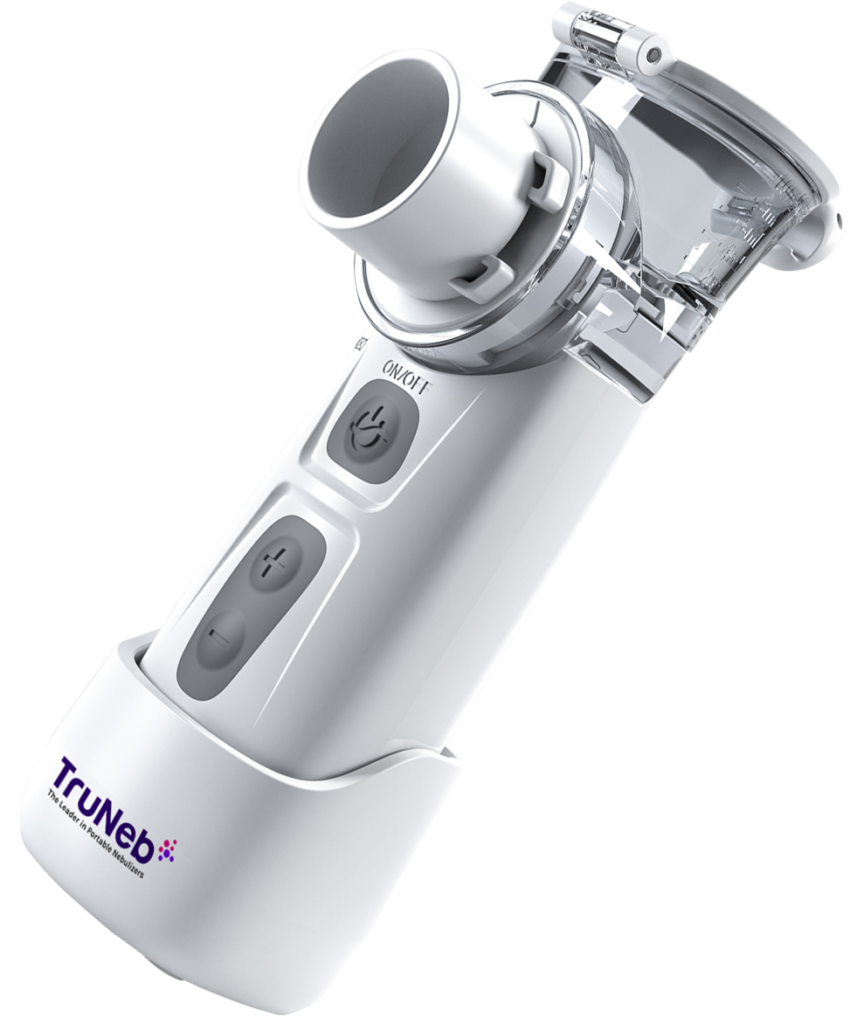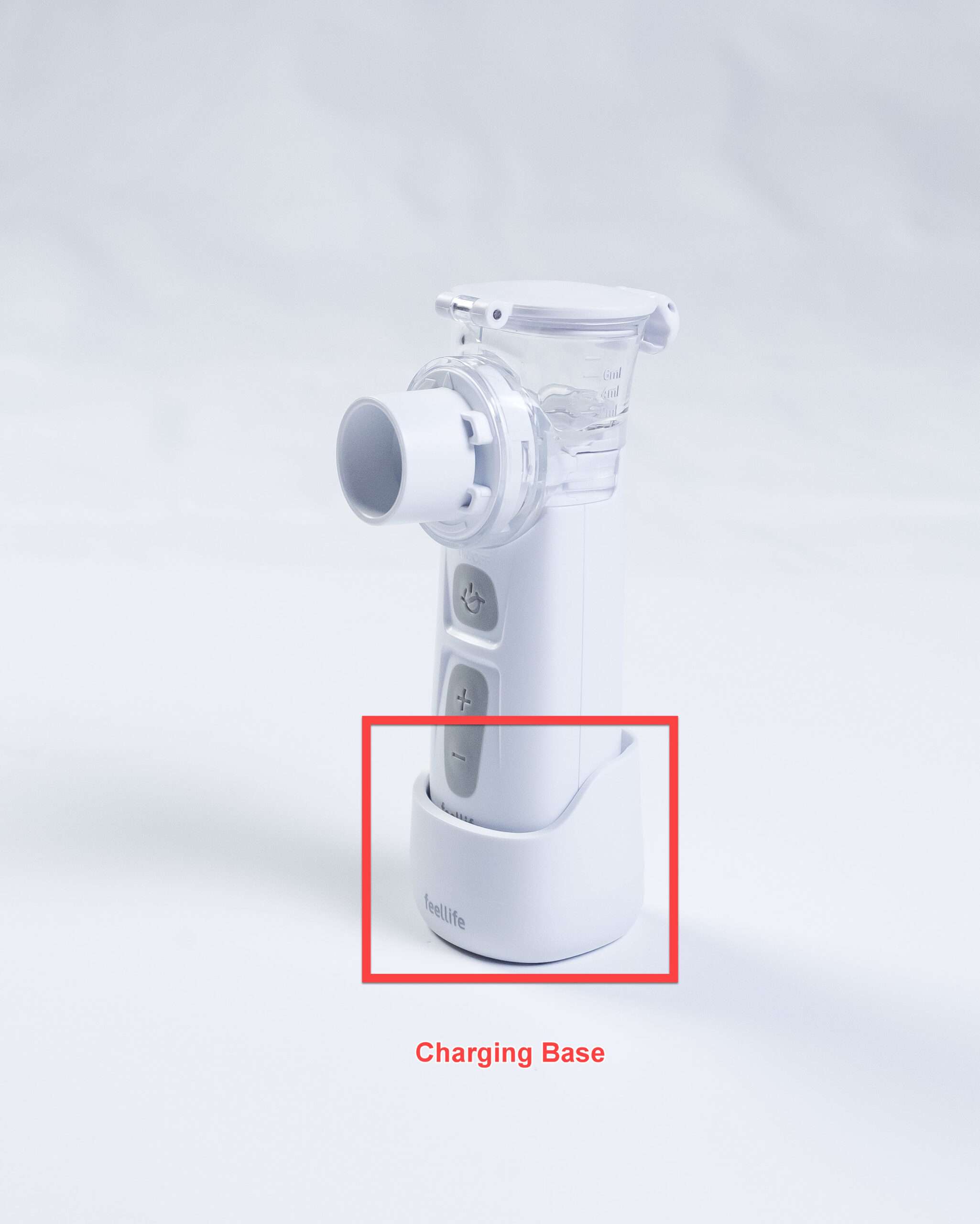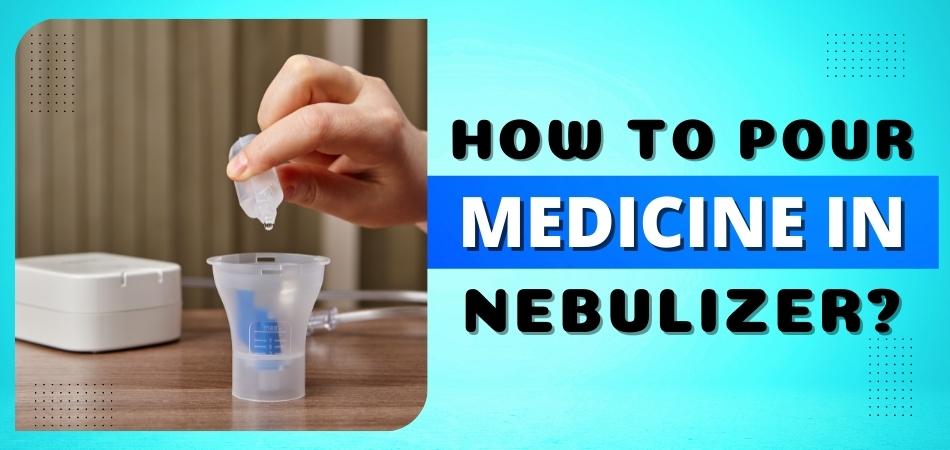A portable nebulizer is a medical device that helps people with respiratory problems breathe easier. Portable nebulizers are small, so they can be taken with you wherever you go.
Different types of medication can be used in a portable nebulizer, including both asthma medications and antibiotics.
In this blog post, we will discuss the different types of medications that can be used in a portable nebulizer, as well as the pros and cons of using one.
What is a Portable Nebulizer?
A portable nebulizer is a small, handheld device that uses compressed air to turn liquid medication into a fine mist that can be inhaled. The medication is typically a bronchodilator or an anti-inflammatory agent.

Portable nebulizers are used to treat conditions such as asthma, COPD, bronchitis, and allergies. They are also often used to deliver medication to people who cannot take it by mouth.
Portable nebulizers come in a variety of sizes and designs. Some models are powered by batteries, while others must be plugged into an electrical outlet. There are also some models that can be worn on the body, making them even more convenient to use.
Portable nebulizers typically have a mouthpiece or mask that attaches to the device, and a reservoir for the liquid medication. The medication is added to the reservoir and then the device is turned on. The nebulizer produces a fine mist of medication that is inhaled through the mouthpiece or mask.
Portable nebulizers are a convenient way to receive medication, particularly for people who have difficulty taking it by mouth or who need to take their medication with them when they travel.
They are also relatively affordable and easy to use. If you are considering using a portable nebulizer, talk to your doctor about whether it is the right treatment option for you.
What Liquid Do You Put in A Portable Nebulizer?
If you are using a portable nebulizer, it is important to use the correct type of liquid medication. The most common types of liquids used in nebulizers are sterile water, saline solution, and bronchodilator solutions. It is important to follow the manufacturer’s instructions when filling your nebulizer cup with medication.
Sterile water: Sterile water for inhalation is a sterile, nonpyrogenic solution that contains no bacteriostatic agents or antimicrobial preservatives. Sterile water can be used as a diluent for many medications that are commonly prescribed for inhalation therapy.
When using sterile water as a diluent, it is important to follow the manufacturer’s instructions for proper administration and storage of the diluted medication.
Saline solution: The saline solution is typically 0.9% sodium chloride (NaCl) in distilled water and does not contain any preservatives. Saline solution can be used as a diluent for many medications that are commonly prescribed for inhalation therapy.
When using a saline solution as a diluent, it is important to follow the manufacturer’s instructions for proper administration and storage of the diluted medication. Bronchodilator solutions:
- Bronchodilator solutions are typically 2.5% albuterol sulfate (AS) or 0.5% ipratropium bromide (IB) in normal saline solution and do not contain any preservatives.
- Bronchodilator solutions should only be used with neb cups specifically designed for use with these types of medications (iPump or eNeb).
Can You Use a Nebulizer Without Medicine?
A nebulizer is a device that helps to deliver medication directly to the lungs in the form of a fine mist. It is often used for people who have difficulty using an inhaler or for those with chronic lung conditions such as asthma or COPD. There are two types of nebulizers: jet and ultrasonic.
Jet nebulizers use compressed air to create the mist, while ultrasonic nebulizers use high-frequency sound waves.
Both types of nebulizers can be used without medicine, but they will not be as effective in treating respiratory conditions. Nebulizers can also be used to deliver other medications, such as bronchodilators, antibiotics, and mucolytics.
Some nebulizers can be used without medicine, however, they will not be as effective in treating respiratory conditions. When used without medicine, nebulizers can help to humidify the air and make it easier to breathe.
They can also be used to deliver essential oils or other treatments for respiratory conditions. While a nebulizer without medicine will not provide the same level of relief as one with medication, it can still be beneficial for those with Breathing difficulties.
What Medication Can I Put in My Nebulizer?
If you have a nebulizer at home, you may be wondering what medication you can put in it. The most common type of medication used in nebulizers is an inhaled bronchodilator. This type of medication relaxes the muscles around your airways and makes it easier to breathe.

There are many different brands and types of bronchodilators, so be sure to ask your doctor or pharmacist which one is right for you. Other medications that can be used in nebulizers include corticosteroids, antibiotics, and mucolytics. Corticosteroids are anti-inflammatory drugs that can help reduce swelling and irritation in the airways.
Antibiotics are used to treat respiratory infections caused by bacteria. Mucolytics are drugs that thin out mucus so it’s easier to cough up. Again, there are many different brands and types of these medications, so be sure to ask your doctor or pharmacist which one is right for you.
It’s important to follow the instructions on the label when using any type of medication in your nebulizer. The label will tell you how much medicine to use, how often to use it, and how long to wait between treatments. It’s also important not to mix different types of medications together in the same nebulizer cup.
What to Put in Nebulizer for Cough?
If you have a cough, your doctor may prescribe a nebulizer. A nebulizer is a machine that helps you breathe in medication. The medication goes into your lungs and helps decrease the inflammation that is causing your cough.
There are different types of medications that can be used in a nebulizer. Your doctor will decide which type of medication is best for you based on the severity of your cough and other factors. Some common medications include:
- Albuterol: This medication is used to treat asthma and other breathing disorders. It works by relaxing the muscles around your airways so that they can open up and you can breathe more easily.
- Ipratropium bromide: This medication is also used to treat asthma and other breathing disorders. It works by preventing the release of substances in your body that can cause inflammation.
- Budesonide: This medication is used to treat conditions such as Crohn’s disease, ulcerative colitis, and severe allergies.
How to Nebulize at Home without Nebulizer?
Nebulizing therapy is very effective in treating respiratory conditions. It delivers a high concentration of medication to the lungs, which makes it an ideal treatment for Asthma, COPD, and other respiratory conditions.

The only downside to nebulizing therapy is that it requires a nebulizer machine. Nebulizer machines can be expensive, and they can be difficult to use. Fortunately, there are ways to nebulae at home without a nebulizer machine.
- One way to do this is to use a saline solution and a syringe.
- Fill the syringe with saline solution and attach it to a cup or jar.
- Turn the cup upside down so that the opening of the syringe is submerged in the saline solution.
- Squeeze the plunger on the syringe to release a small amount of solution into the cup.
- Inhale deeply through your mouth and hold your breath for 10 seconds before exhaling.
Another way to nebulize at home without a nebulizer machine is to use a humidifier.
- Fill the humidifier with water and add a few drops of essential oil.
- Set the humidifier to “high” and inhale the mist through your nose and mouth. You can also add eucalyptus oil to a bowl of hot water and inhale the steam through your nose and mouth.
- Finally, you can use an inhaler without a nebulizer machine by placing the mouthpiece of the inhaler between your teeth and sucking on it like a straw.
These are just some of the ways that you can nebulize at home without a nebulizer machine. Talk to your doctor about which method is right for you.
Nebulizer Medicine for Kids
If your child has asthma, their doctor may prescribe a nebulizer. A nebulizer is a machine that converts liquid medicine into a fine mist, which your child can then inhale. Nebulizers are often used to deliver bronchodilators, which are medications that open up the airways and make it easier to breathe.
They can also be used to deliver other types of medications, such as corticosteroids or antibiotics. Nebulizers can be portable or tabletop models. Portable nebulizers are battery-operated and small enough to fit in a backpack or purse.
Tabletop models need to be plugged into an outlet but are generally more powerful than portable nebulizers. Using a nebulizer is relatively simple. First, you’ll need to add the prescribed medication to the machine’s cup.
Then, you’ll attach tubing from the machine to a mouthpiece or mask that covers your child’s nose and mouth. Finally, you’ll turn on the machine and help your child inhale the medication through the mouthpiece or mask. Most children tolerate nebulized medications well.
Some may experience minor side effects like coughing or wheezing after using the machine. These side effects should go away once the medication has been completely inhaled (usually within 5-10 minutes).
Conclusion
If you have a portable nebulizer, you may be wondering what to put in it. There are a few things that you will need to consider when deciding what to put in your nebulizer. The first thing that you will need to think about is the medication that you will be using.
You will need to make sure that the medication is compatible with the nebulizer that you have. The next thing to consider is the concentration of the medication. You will want to make sure that the concentration is not too high or too low for your needs.
Lastly, you will want to consider how often you will be using the nebulizer.



